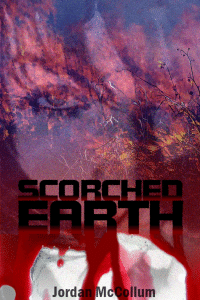Even if I decide to spring for Scrivener, I still have some fairly awesome editing tricks that only work in Microsoft Word. So I needed to figure out how to get my first draft out of Scrivener as cleanly as possible—especially since the Nano version Scrivener trial expires tomorrow, and I definitely won’t get it before Christmas.
So after some experimentation, I figured out the best way to get my manuscript in Word format without requiring a ton of reformatting. Here’s a screen-by-screen guide to make it easy to export from Scrivener into Word.
Preparation
First, I put every. single. chapter. in its own folder. Even if it was only one scene (file), I made sure it was in a folder, all at the top level (though I think the level isn’t terribly vital). I also made sure the folders themselves didn’t have a scene written in them—only nestled safely inside. (I also moved my character notes, etc., into the Manuscript folder just in case I don’t go for Scrivener.)

That took about an hour. You don’t have to use that exact structure, but be sure to use something systematic and remember what it is!
If you want it to generate your title page, be sure to fill out the appropriate title page information (above Manuscript).
Begin the compile
Once you’re organized, click the Compile button.

START with Novel Standard Manuscript Format or Times 12pt with Bold Folder Titles. The automatic output is not how I format my manuscripts nor is it the standard format that I’ve seen from publishers and agents (“Standard” claim notwithstanding), so I customized it to provide a clean manuscript I won’t have to heavily reformat by hand.
CONTENTS
Make sure all the appropriate files (folders & files) are checked—no check mark, no file. If you forgot to check the “Include in compile” check box on the scene, you can fix that here. Also, if you put any of your notes in the compile, you might have to check those as well.

Because of the way I was customizing my manuscript, I UNchecked all of the Pg Break Before and As-Is boxes. (Honestly, I don’t know what the second one does.)
SEPARATORS
This is where you need to remember how you organized your files and folders. The way that I organized mine, I could be sure that if there were two files next to one another, they were scenes in the same chapter, so they needed to be  separated by a # or a *** or whatever you use. If a folder came before a folder, they were part of the same chapter. I didn’t have any folders next to folders, but when a file came before a folder, it was the beginning of a new chapter.
separated by a # or a *** or whatever you use. If a folder came before a folder, they were part of the same chapter. I didn’t have any folders next to folders, but when a file came before a folder, it was the beginning of a new chapter.
So under separators, remember how you’ve organized your files so you can tell it how to separate them. If you use the same system as me, here’s how I set up my separators.
Text Separator: Custom: # (or ***) — Two adjacent text files are always two scenes in the same chapter, so they’ll need a break like this.
Folder Separator: empty line — For me, I didn’t have this in my manuscript, so it didn’t matter.
Folder and Text Separator: empty line — The way I organized my files, there was never any text in the folder itself. This separator, then, controlled only the break between the chapter heading (CHAPTER ONE) and the beginning of the text. The default setting puts the chapter heading on its own page (but there’s another setting you have to tweak to fix this).
Text and Folder Separator: page break — With my organization, a folder that followed a file was always the beginning of a new chapter. So, new page.
FORMATTING
If you have formatted your text in Scrivener—using italics, or bold, or changing the fonts—uncheck Override text and notes formatting.
If your chapter (folder or file) titles are descriptive and part of the manuscript, make sure that the Title box is checked—but if you want Scrivener to automatically number your chapters, uncheck Level 1+ folder Title.

I tried clicking OPTIONS… and telling it to Place notes after main text. I was expecting this to put the Document and/or Project notes after the appropriate section, but I didn’t see those notes. (Mine weren’t very extensive so I just ported them by hand.)
UPDATE: A Scrivener rep stopped by with this handy tip in the comments. To export your notes:
You need to check off “Notes” in the Formatting pane grid. It’s to the left of “Text”. The option to place notes before or after the main text is irrelevant until that checkbox is on. When Notes are added, they will be presented in the preview editor, and can have independent formatting applied to them from the main text.
Now, if you’re using the same organization (i.e. folders hold chapters), and you do NOT want the chapter header on its own page or in Courier New, select the folder. Click the Modify button below.

This opens the menu to format the chapter headings. Adjust the Page Padding if desired (I believe this is the number of lines it skips before and after the chapter heading). Want “Chapter” instead of “CHAPTER”? Click on Section Layout…, select the Case tab and change Title Prefix to Normal. You can also click the A to set the font, size and other options.
TRANSFORMATIONS
To export to Word, you don’t need it to transform these things—smart quotes, em dashes, etc., have long been “standard” in manuscript format (as has TNR, but hey). So I recommend unchecking everything here.
I didn’t use Replacements or Footnotes/Comments, so the only other customizations were with . . .
PAGE SETTINGS
The default for the running header font is Courier New, even if your MS is in Times. So by Header font:, click on Choose… to change that. (It generates a header of Last name / TITLE / p#.)

If you’re using a title page, make sure Not on page 1 is checked. If you’re not using a title page, that’s up to your discretion.
Almost done!
COMPILE FOR
On every screen, just above the Compile, Save & Close and Save buttons, there’s a Compile For pull down menu. You can select Word and have it save as a .doc automatically.

Click the Compile button and voila! A clean manuscript!
Important note! Scrivener does not hyphenate compound numbers in automatically numbered chapters. So, basically 21-29, 31-39, etc., are misspelled, and you’ll have to add the hyphens by hand. But seriously, that was the least time consuming part of all my experimentation.
I consulted this post on compiling from Scrivener by Gwen Hernandez, author of Scrivener For Dummies, but figured out a whole lot with six experimental compiles.
What do you think? How do you compile from Scrivener?



 separated by a # or a *** or whatever you use. If a folder came before a folder, they were part of the same chapter. I didn’t have any folders next to folders, but when a file came before a folder, it was the beginning of a new chapter.
separated by a # or a *** or whatever you use. If a folder came before a folder, they were part of the same chapter. I didn’t have any folders next to folders, but when a file came before a folder, it was the beginning of a new chapter.





















 I do like having character sketches and a little bit of my research (although there wasn’t much for this book) right there. Most of my research this time around was deep background, so it wasn’t worth saving. (Would this be enough X? Yes, great, moving on.)
I do like having character sketches and a little bit of my research (although there wasn’t much for this book) right there. Most of my research this time around was deep background, so it wasn’t worth saving. (Would this be enough X? Yes, great, moving on.)  But really, once someone gives you permission to contact them, they are that much closer to a real connection with you. Marketing isn’t just about shouting down from the rooftops. Unless it’s about building a connection, connecting with people who already like you, and helping new people to like you—all very personal, social things—your marketing will probably talk right over your subscribers’ heads.
But really, once someone gives you permission to contact them, they are that much closer to a real connection with you. Marketing isn’t just about shouting down from the rooftops. Unless it’s about building a connection, connecting with people who already like you, and helping new people to like you—all very personal, social things—your marketing will probably talk right over your subscribers’ heads.
